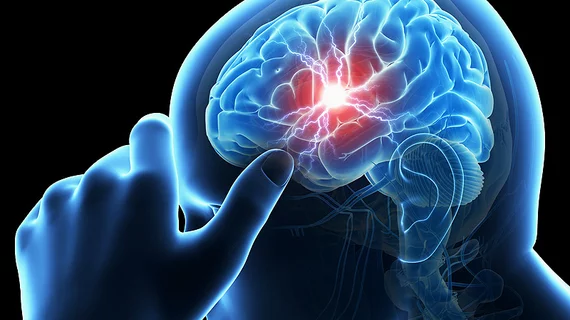Should interventional cardiologists be involved in acute stroke care?
Two papers published March 25 in the Journal of the American College of Cardiology make the case for training other interventionalists, including cardiologists, in performing mechanical thrombectomy to increase access to the emergency stroke treatment.
“The 800 to 1,100 neurointerventionists need help if the availability of urgent mechanical thrombectomy for eligible stroke patients is to be optimized at the 5,000+ hospitals across the United States,” David R. Holmes Jr., MD, and L. Nelson Hopkins, MD, wrote in a JACC review. “Neurointerventional training programs in neuroradiology, neurology, and neurosurgery will not be sufficient to provide the necessary people power. Interventional cardiology, radiology, and vascular surgery can add value for the stroke teams of the future.”
Christopher J. White, MD, with Ochsner Medical Center New Orleans, noted in another JACC article that every 10 minutes of delayed care for patients with large vessel occlusion (LVO) has been linked to a 40-day reduction in a patient’s disability-free lifetime and decreases the “net monetary benefit” of mechanical thrombectomy (MT) by about $10,000.
“The neuroscience community argues that there is no shortage of neurointerventional (NI) specialists to treat the annual volume of LVOs resulting in stroke,” White wrote. “What they fail to acknowledge is the geographic maldistribution of these specialists, who are predominantly concentrated in urban academic medical centers. In the United States, only 50% of the population has ≤1-h access, by ground transport, to MT stroke treatment-capable comprehensive stroke centers (CSCs).”
While there are around 1,000 neurointerventionalists in the U.S., Holmes and Hopkins pointed out there are roughly 10,000 interventionalists trained in the fields of cardiology, radiology or vascular surgery. Cardiologists have excellent catheter skills, they said, and are experienced in targeting rapid reperfusion times for ST-segment elevation myocardial infarction (STEMI) treatment.
“An advantage of including interventional cardiologists is that they have worked under the time constraints imposed as metrics of care for 24/7/365 delivery of treatment of acute myocardial infarction,” the authors wrote. “In addition, they have extensive STEMI experience opening occluded arteries on awake patients with a rapidly moving target.”
But not all of these physicians would be good candidates for stroke teams and specific training criteria would need to be met, Holmes and Hopkins wrote. Basics include an understanding of the craniovascular pathophysiology and anatomy, mastering thrombectomy-specific tools and accessing the major intracranial arteries—which are thinner and more fragile than coronary arteries. Effectively assessing whether a stroke is evolving or not is also crucial, in addition to choosing the best diagnostic imaging techniques.
White summarized a couple of studies in which interventional cardiologists trained in carotid artery stenting achieved comparable thrombectomy outcomes to neurointerventionalists when a noninvasive neurologist was available for patient management advice.
Telemedicine would make such a partnership feasible in the current environment, White noted. Particularly in rural areas where there aren’t enough neurointerventionalists to staff an around-the-clock emergent care schedule, a neurologist could be consulted via remote technology to aid in patient assessment and diagnosis and propose a care strategy. When speedy thrombectomy is the best option, a local interventional cardiologist could perform the procedure before the patient is sent to a comprehensive stroke center for the best rehabilitation care, if necessary.
“Much like the ‘heart team’ approach for complex structural and heart valve diseases, the collaboration of multidisciplinary ‘stroke teams’ involving neurologists and ICs can extend timely reperfusion for acute stroke patients to communities that lack access to NI specialists,” White wrote. “Turf battles are contrary to good patient care. We need to move on to extending emergent stroke care to the underserved communities that need it.”

